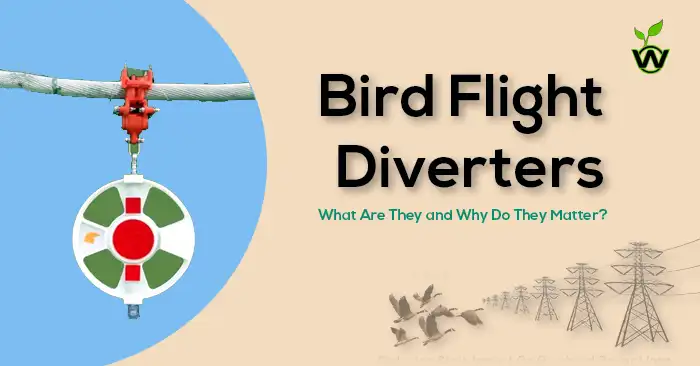Between 2018-2022, some reports cited catastrophic incidents in which the critically endangered species Great Indian Bustard collided with power lines in its natural habitat in Gujarat and Rajasthan. The Great Indian Bustard (GIB), a beautiful icon of India’s bird history, is in a battle for survival with an odd foe: power lines.
Yes, you read it right! In 2019, the National Green Tribunal (NGT) received a gloomy report from the Ministry of Environment, Forest, and Climate Change (MoEFCC) that highlighted the serious threat presented by power lines to the GIB’s declining population.
These enormous towers, designed to illuminate our cities and fuel our businesses, have instead become death traps for one of our most endangered feathered friends.
Fast forward to April 4, 2024, and the Supreme Court takes decisive action, forming a seven-member expert group tasked with determining the GIB’s core habitat and suggesting ways to prohibit overhead power transmission lines in these crucial locations.
With only 150 individuals surviving in the wild, this highly endangered species is on the verge of extinction. Each collision with a high-voltage power line pushes the GIB one step closer to extinction, increasing mortality rates and pushing this iconic species to the brink.
The committee faces a difficult task to achieve a delicate balance between conservation imperatives and the demands of sustainable growth. With the weight of this historic decision on their shoulders, they must traverse the complex web of environmental protection and economic development. Throughout this ongoing scenario, a fresh solution emerges the bird flight diverter.
Bird Flight Diverters

Approximately 70% of bird species migrate to find the best ecological conditions for foraging, nesting, and raising their young, and around80% of these migrating birds fly at night. Consider the difficulties they face: navigating through darkness, avoiding predators, and staying on course.
However, there is a darker aspect to this quest. Human activity causes considerable threats to birds. Every year, countless lives are lost due to collisions with electricity lines, electrocutions, and other artificial hazards. Here’s where Bird Flight Diverters come in.
Bird Flight Diverters are devices meant to make overhead lines and structures visible to birds, thus minimizing the threat to both the lines and the birds. They are an important safety device that can help prevent bird crashes with power wires and other infrastructure. The Bird Flight Diverters, are modest yet important devices meant to save our feathered friends.
Don’t forget to read: Are You Ready for 5G Towers Over the Dead Bodies of Birds?
How do Bird Flight Diverters work?
These devices lessen the risk of bird crashes with power lines, especially for large birds such as raptors and cranes. They are primarily made up of visual indicators or physical attachments that are placed on power lines to increase visibility to birds and urge them to change their flight path.
Here’s how they operate:
1. Visual Markers: Bird flight diverters frequently use brightly colored or reflective materials to boost the visibility of power lines to birds, particularly in poor light or inclement weather. Flags, balls, discs, or spirals can be used as markers and are affixed to electrical wires at regular intervals.
2. Physical Attachments: Some bird flight diverters contain physical attachments such as “flappers” or “clackers” that move in the wind or vibrate when birds approach. These dynamic features produce aural and visual cues that warn birds of the presence of power lines and encourage them to avoid collisions.
3. Spacing and Placement: Bird flight diverters are carefully erected along power lines, usually at intervals where birds are most likely to collide. Diverters are most successful at deterring bird crashes when they are evenly spaced and placed at strategic locations along the power line route.
4. Research and Development: Technology and research advancements are constantly improving the design and effectiveness of bird flight diverters. Bird-sensitive materials and motion-activated deterrents are examples of innovations that strive to improve their capacity to reduce bird accidents while limiting potential consequences on power line performance.
Also Check:Disadvantages of Online Learning : Only Cons of e-learning
Challenges in Implementing Bird Flight Diverters
Implementing bird flight diverters poses some issues that must be addressed:
- Cost: One of the most significant issues is the financial burden of installing and maintaining bird diverters. The materials utilized in their construction, as well as the labor necessary for installation and maintenance, might result in large costs. This price component may be a barrier to widespread adoption, especially for organizations with low resources.
- Efficiency: Bird diverters are successful at deterring smaller bird species, but larger and heavier birds may pose a greater difficulty. Birds such as the Great Indian Bustard (GIB), with their large size and poor frontal vision, may fail to detect and react to diverters in time to prevent accidents. This constraint emphasizes the need for novel methods to successfully reduce the danger of collisions for all bird species, regardless of size or habit.
Addressing these issues necessitates a multidimensional approach that includes technical innovation, cost-effective solutions, and coordination among conservation groups, government agencies, and industry parties. By addressing these challenges, we can improve the effectiveness of bird diverters and lower the risk of avian collisions with power lines, thus helping to conserve fragile bird species.
Conclusion
Bird Flight Diverters help bridge the gap between human infrastructure and avian survival. Making power lines more visible to birds reduces the risk of collisions and electrocutions. So, the next time you see those unassuming markers along the wires, remember that they matter. They are the silent guardians of our skies, ensuring that birds can continue their amazing flights freely.






